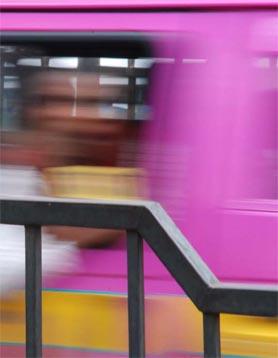Matatu Culture

Students: Reto Naef, Jürg Burger
Location: Group work in Nairobi
Date: December, 2007
Type: Research project, student work, the Globe Cinema Roundabout
Matatus are Nairbobi’s primary means of public transport. They crowd the streets (and the pavements, if existing), create traffic jams, and fill the air with nauseous smells of Diesel exhaust. Matatus are shared taxis or small busses, usually Isuzu Minibuses, seating anything between 8 and 20 people and following fixed and designated routes. They are privately owned and operated by a driver and the manamba, the person who operates the door of the Matatu and hails the people to board, collects fees and checks that everything is working according to plan. The city administration regulates the Matatu traffic, assigns numbers to individual routes and has recently issued safety rules, regarding speed, music, dress code of the drivers and various other regulations that are meant to bring order to a business sector that used to be infamous for the notorious traffic disobedience and a general state of anarchy. Even though regulated by the city administration, no printed network plan for the Matatu lines exist. One has to rely solely on common knowledge to find one’s way around the city.
Beyond their immediate function, Matatus have also created a culture of their own. Matatu owners paint their busses in flamboyant colors, decorate the exterior with images of popstars, trendy slogans or other elements of popular culture. They install massive sound systems and shaded windows, to create a disco-on-wheels with the hope to appear more attractive to potential customers. The customers often select the individual Matatus just based on these elements of Hip-Hop Music or the fanciness of the paint-job. The ride in a Matatu is not only for the purpose of getting from A to B, but it is loaded with recreational elements. School children are known to skip school and continuously drive around in their most favourite Matatus. Nairobi’s traffic is organized in a centralized way. Almost all Matatu routes start from the city center and move out of the city, continuously driving on their determined routes. In the inner city, three main endpoints on the Matatu network exist: the square in front of the railway station, an intersection in the south-east of the city, and the Globe Cinema Roundabout, on the north-eastern edge of the city center. This roundabout is claimed to be East Africa’s biggest. It feeds and sorts the traffic coming from the residential neighborhoods in the eastern part of the city. The Nairobi River flows through this roundabout and it is the beginning of the infamous River Road known for its vice.
Download the Book PDF

